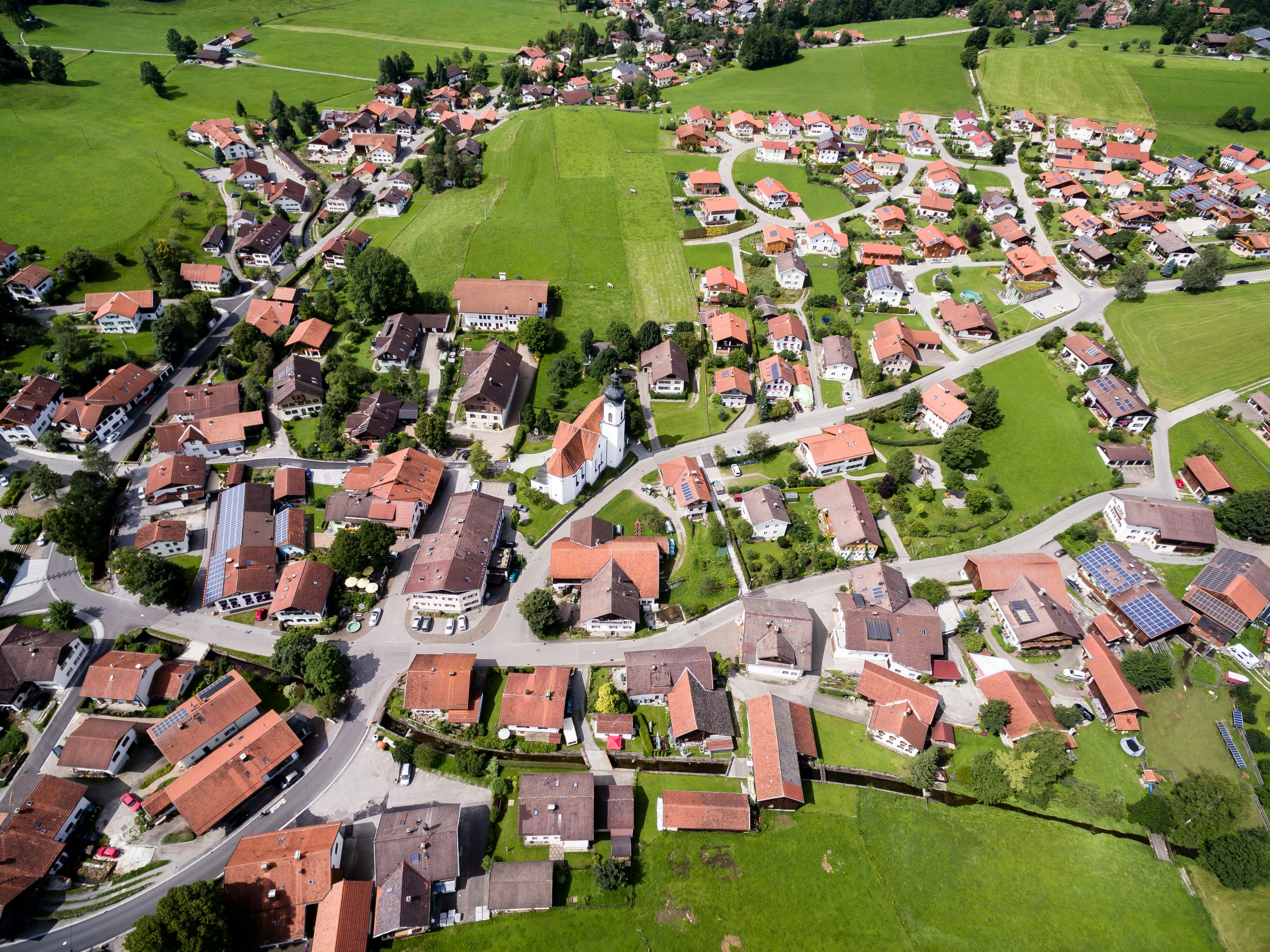
Transform a town with climate-resilient energy
 Silvertown
Silvertown E.ON
E.ON Business Sweden
Business Sweden总结
A low-carbon energy network in a township delivers heating and cooling for 6,000+ buildings, cutting emissions by 88% and boosting urban resilience
Context
Urban areas face rising emissions from heating and cooling, which account for a large share of energy demand and are still dominated by fossil-fuel boilers. Decarbonising these systems is a central challenge, as they are highly vulnerable to volatile gas prices, regulatory pressure, and increasing demand from electrification. To address this, E.ON’s decarbonisation strategy focuses on decentralised low-temperature networks, digital optimisation, and sector integration. By enabling buildings to share surplus heat and cold, such systems reduce emissions, improve resilience, and lower dependency on fossil fuels.
Location of the initiative: Silvertown district, East London, United Kingdom
Solution
Initiative Introduction
A pioneering initiative has been launched in Silvertown, East London, to decarbonise heating and cooling—one of the most carbon-intensive parts of urban energy demand. The project establishes a decentralised low-temperature network that circulates water through the district. Each building is equipped with heat pumps that can either draw or return energy, creating a shared system where surplus heat from one building can serve another (1) (2).
Impact
Sustainability impact
Climate
Targeted Scopes
Scope 1: Direct emissions from fossil-fuel heating at buildings are reduced, as gas boilers are replaced with heat pumps connected to the ectogrid™ network.
Scope 2: Indirect electricity-related emissions are optimised, since decentralised heat pumps run on low-carbon electricity and digital systems minimise energy losses.
Scope 3:
Category 2: Capital Goods – Emissions linked to construction of underground pipework, decentralised heat pumps, and digital infrastructure are included during the build phase.
Additional Scope 3 benefits stem from reduced fossil fuel extraction, processing, and transport emissions avoided over the network’s lifetime.
GHG Impact
The Silvertown ectogrid™ is expected to reduce emissions from heating and cooling by 88%, equivalent to about 4,000 tonnes of CO₂ annually once operational. This represents long-term reductions over the system’s lifetime, with benefits scaling as more buildings are connected. While construction-related Scope 3 emissions are front-loaded, the operational phase rapidly offsets these through significant avoided combustion of natural gas (1) (2) (3).
Enabling Potential
Beyond direct reductions, the project demonstrates how decentralised, digital energy networks can be replicated in other urban developments, offering an enabling model for systemic Scope 1–3 emission cuts across cities.
Nature
The Silvertown ectogrid™ reduces negative impacts on nature and biodiversity by replacing fossil-fuel-based heating with a decentralised, low-temperature network. By avoiding natural gas combustion, the system prevents local air pollution such as NOx and particulate matter, directly improving urban air quality and reducing stress on ecosystems.
The lower demand for fossil fuel extraction, processing, and transport decreases pressure on natural habitats that would otherwise be affected by mining and drilling activities. In addition, the underground pipework requires only limited land use compared to traditional energy infrastructure, minimising disruption to surface-level habitats.
On the positive side, improved air quality and reduced greenhouse gas emissions indirectly benefit biodiversity by limiting climate change drivers and creating healthier urban environments where people, plants, and wildlife coexist more sustainably.
Social
People and Society Impact: The Silvertown ectogrid™ creates clear positive impacts for people and society by providing residents and businesses with reliable, affordable, and low-carbon heating and cooling.
Replacing gas boilers reduces vulnerability to volatile fuel prices, protecting households and communities from energy insecurity and cost shocks. The decentralised design also increases system resilience, ensuring continuity of service during extreme weather events or supply disruptions.
In the long term, the project supports social equity by embedding sustainable energy infrastructure into an urban regeneration programme, directly benefiting more than 6,000 homes and workplaces (3).
Business Impact
Benefits
Business Benefits Beyond Sustainability: The Silvertown ectogrid™ delivers opportunities that go well beyond environmental gains. Operationally, the decentralised design reduces dependency on single energy sources, improving reliability and lowering maintenance risks compared to conventional boiler systems. Digital monitoring through ectocloud™ enhances asset lifetime, reduces downtime, and enables predictive maintenance, which directly increases operational efficiency and productivity.
From a financial perspective, the initiative protects both customers and the business from volatile fossil fuel costs, creating long-term savings and more stable revenue streams. Embedding the network into a large regeneration project also positions the company as a key partner for urban development, opening doors for future projects and market expansion.
Costs
Cost Details: The Silvertown ectogrid™ represents an investment of around £30 million (USD $37 million), jointly committed by partners including E.ON, Lendlease, and local stakeholders. Operating costs are expected to be significantly lower than conventional heating systems, as decentralised heat pumps and shared energy flows reduce fuel use and maintenance needs. Digital optimisation through ectocloud™ further lowers costs by extending asset lifetimes and reducing downtime (1).
Implementation
Typical business profile
Relevant Business Profiles: The ectogrid™ model is most relevant for urban developers, utilities, and energy-intensive sectors where heating and cooling drive significant emissions. It applies to:
Large-scale regeneration projects integrating sustainable energy infrastructure for thousands of homes and workplaces, as in Silvertown.
Municipalities and utilities seeking decentralised district heating and cooling solutions to reduce fossil fuel reliance and climate risks.
Industrial sites, campuses, or smaller neighbourhoods, where heating and cooling needs can be linked to form a shared network. Even at this scale, surplus energy can be exchanged between buildings, improving efficiency and lowering costs.
Businesses advancing Net Zero strategies, looking to cut Scope 1 emissions from on-site boilers with scalable low-carbon networks.
Dense urban or peri-urban regions, where economies of scale enhance both financial and social benefits.
Ectogrid™ thus works as a blueprint for both large urban projects and smaller-scale community or campus networks.
Approach
Key Steps:
Network design: Installation of underground pipework to circulate low-temperature water across the district.
Building integration: Deployment of decentralised heat pumps in homes, offices, and community facilities.
Energy sharing: Surplus heating or cooling exchanged between buildings, reducing waste and boosting efficiency.
Digital optimisation: Use of smart monitoring and predictive analytics to balance demand and supply in real time.
This approach reduces emissions by 88%—around 4,000 tonnes of CO₂ annually—and creates a scalable, replicable model for sustainable urban energy (1) (2).
Stakeholders involved
Key Stakeholders:
Project Leads: The initiative was led by E.ON as energy partner, in close collaboration with Lendlease, the master developer of Silvertown’s regeneration programme. Together they ensured energy infrastructure was embedded in the urban design from the outset.
Company Functions: Core functions included engineering and operations for system design and build, digital and IT teams for ectocloud™ integration, and procurement to source pipework, pumps, and digital equipment. Sustainability and regulatory teams aligned the project with climate targets and compliance requirements.
Main Providers: Technology providers delivered heat pumps, underground pipework, and monitoring systems. Digital solutions for predictive analytics and optimisation were integrated through ectocloud™.
Other Stakeholders: Local authorities facilitated planning approvals, while future residents and businesses acted as end users shaping demand. Investors and financiers supported capital mobilisation, ensuring long-term viability of the £30m network.
Key parameters to consider
Key Parameters for Decision Making
Initiative maturity: ectogrid™ is an early-stage innovation, with Silvertown being the first large-scale UK application. Smaller pilots exist in continental Europe. (3)
Implementation timeline: Planning and integration began during Silvertown’s regeneration masterplan; full rollout is expected by 2027. (~5–7 years from planning to operation) (1)
Average lifetime: Infrastructure such as underground pipework has a lifetime of 30–40 years; decentralised heat pumps ~15–20 years.
Technical constraints: Requires sufficient building density to benefit from energy sharing. Integration is most efficient when embedded into new urban developments, but retrofits are possible with higher cost.
Geographical relevance: Particularly suited to urban districts with mixed-use buildings and high heating/cooling demand.
Applied sectors: Residential, commercial offices, community facilities, and industrial campuses.
Regulations: Stronger climate targets and district energy policies act as enablers; fragmented building ownership or lack of planning alignment may block implementation.
Implementation and operation tips
Main Challenges
Integration complexity: Coordinating energy infrastructure with urban regeneration and multiple stakeholders.
Upfront investment: High initial capital (£30m) requires strong financial planning and partnerships.
Early-stage technology: Limited large-scale references created uncertainty for regulators, investors, and customers.
Operational risks: Ensuring system reliability across thousands of users in varying building types.
Overcoming Challenges
Collaboration: Early alignment with city authorities, developers (Lendlease), and communities to embed energy design into the masterplan.
Partnership financing: Shared funding between energy provider, developer, and local stakeholders reduced individual risk.
Digital optimisation: ectocloud™ used to predict demand, extend asset lifetimes, and enhance reliability, building confidence in performance.
Demonstration value: Framing Silvertown as a flagship case supported wider acceptance.
Tips for Long-Term Success
Integrate systems during early planning to avoid costly retrofits.
Use transparent performance data to build trust with regulators and investors.
Prioritise scalability and modular design, allowing replication from district to district.
Invest in community engagement, ensuring local acceptance and long-term customer loyalty.
Going further
External links
Source list